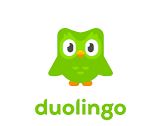Key Facts
- Use a **mix of apps** to learn Italian, focusing on those that build your **confidence** rather than starting with complex grammar courses.
- Recommended apps include **Think in Italian**, **Pimsleur**, and **Duolingo**, each offering unique features to enhance your learning experience.
- Consider **tutoring services** like **iTalki**, **Lingoci**, and **Verbling** for personalized lessons with native speakers once you gain some confidence.
- Engage with **real-world materials** such as books, podcasts, and music to reinforce your learning and expose yourself to new vocabulary and expressions.
There isn’t one single app that will teach you all you need to become fluent in Italian. You’ll probably end up using a mix of apps to improve your Italian. Just make sure you choose apps that build your confidence.
In this post, you’ll read about the best apps to learn Italian.
What kind of app should I choose to learn Italian?

There’s one thing you should NOT do: start with a grammar course.
Grammar can be complex, boring, frustrating and the biggest problem when you’re learning Italian is that you might want to give up.
You’ll want to give up because it’s too hard, or because you feel like you’re not getting anywhere, or you’ll just lose interest and stop putting in the effort.
And when you’re learning verb conjugations and tenses, your dream of speaking fluent Italian can seem extremely far away.
So forget about grammar for now. You’ll have time for that later on.
Instead, you should look for something that will give you the confidence to start understanding and speaking some Italian. You don’t have to be fluent from the very beginning. You just need to get started and have some fun.
What are the best apps to learn Italian?

There are three apps that I strongly recommend:
Think in Italian

Think in Italian (previously called Fluent Simple) is the best online Italian course. It was designed by an Italian teacher called Stefano.
It comes with the following features:
- grammar lessons
- audio lessons
- articles and stories
- blog posts about Italy
It also offers the following options:
Leggi con me includes a collection of news, short stories, and conversations with bilingual texts and audio.
Impara con Me is a big collection of Italian audio lessons and short readings organised by level with audio, Italian transcripts, and English translations. This will help you improve your listening, speaking, and reading skills.
Ripeti con Me is an interesting method to learn a foreign language. This is a great method to learn Italian using spaced repetition, which is an effective method to develop your listening skills.
You’ll basically hear the same words in different contexts. After some time, you will get used to all these words and will start using them in a rather natural way. Also, you will hear grammar structures all the time without even realising it, meaning you won’t be overwhelmed with lots of grammar rules.
Pimsleur Italian audio courses
Pimsleur is great if you’re a beginner and want to get used to what Italian sounds like.
Each Pimsleur level teaches more or less 500 words over 16 hours. People use around 2000 words in everyday life, so if you complete all levels, you’ll be able to get along quite well.
Pimsleur works with spaced repetition, meaning you’ll be asked to recall new words again and again.
So Pimsleur will definitely help you improve your pronunciation.
However, Pimsleur doesn’t give you many explanations. There is just an English-speaking narrator who points things out from time to time.
Also, Pimsleur doesn’t teach you much about the structure of Italian, so if you want to be fluent you will definitely need a textbook or another course.
The great thing is that, since lessons are audio lessons, you can listen to them anywhere. It’s very good if your goal is to improve your pronunciation. Just make sure you say words out loud.
Duolingo

The great thing about Duolingo is that it’s FREE. This alone is a very attractive reason to check it out.
Also, Duolingo motivates you in a different way. It’s basically a game, and it’s really fun to use. It rewards you with lingots when you achieve certain goals. It encourages you to maintain a streak by hitting your daily targets.
All this gamification makes it easy to make you stay motivated and see your progress if you’re the kind of person who is motivated by these rewards.
Duolingo starts with basic vocabulary and shows you how to build sentences. You’ll learn phrases that are not very useful, but which follow the grammar rules you learned.
Duolingo focuses a lot on grammar and, as I said, you shouldn’t start with a grammar course. However, if you find that Duolingo helps you work on your Italian, go ahead and use it.
If you find it boring and you don’t care about little gem rewards, try one of the other two options above.
Other apps to learn Italian
Michel Thomas Italian
Michel Thomas Italian is really useful when you’re trying to build your confidence.
The entire course is just audio recordings of Michel Thomas teaching two Italian learners.
You start with simple phrases and quickly build on top of these until you can say some more complex sentences. But it’s not just about memorising phrases. Along the way, Michel Thomas explains important language rules, and shows you how to use the things you’ve learned in different contexts.
By the end of the course, you won’t be fluent in Italian, but you’ll be able to hold basic conversations with Italian speakers, and understand some of what Italian speakers say.
If you can get your hands on a boxed set of CDs (through Amazon or similar), this would be the safest way to go. You can also buy the lessons through Audible and iTunes stores, but it is more expensive.
Rocket Italian
This is another audio course that does pretty much the same thing as Michel Thomas. But it’s more structured. There’s a native Italian-speaking presenter, and no “students” getting everything wrong all the time.
It’s available online through the Rocket Languages website.
It’s a very enjoyable and encouraging course even if it doesn’t teach you all you need.
If you buy Rocket Italian, there’s no need to also buy Michel Thomas. The Rocket Italian audio course will do just fine, and you’ll save a bit of money.
Rosetta Stone
If Rosetta Stone is the only app you’re using to learn Italian, you probably won’t get too far.
The good thing about Rosetta Stone is that it doesn’t overwhelm you with tedious grammar rules. Also, it is fun and game-like, and a bit addictive to play. Speaking out loud is a big thing: there’s voice recognition to check your pronunciation so it’ll definitely help you with your Italian pronunciation.
It’s good for learning verbs and simple tenses. And the words really stick in your head, because you’ll see them again and again and again.
But most importantly, Rosetta Stone is great at showing you the progress you’re making. It will give you a lot of confidence and enthusiasm to keep going.
Lessons with an Italian-speaking tutor

Once you’ve got that enthusiasm and confidence built up, and you’re less likely to give up, the next step is to start learning from an actual Italian speaker.
It’s not as difficult or expensive as you might think.
There are a number of websites that will connect you with Italian tutors. Lessons usually happen over Skype (or other video chat systems).
These are the ones I recommend:
iTalki
iTalki is the biggest one-on-one tutoring service on the Internet. You can find tutors of all sorts of quality (and price) for any language in the world.
Some iTalki tutors are professional teachers who have the skills and experience to teach, while others are “community tutors” without official qualifications.
Most tutors will offer a trial lesson at a reduced cost.
Lingoci
For learning Italian, Lingoci has excellent reviews. Its founder, Alex Redfern, stresses how much effort they put into recruiting and screening quality tutors.
You can choose your own tutor, or they can help you choose someone depending on your skills and goals.
Verbling
You can use Verbling to find an affordable tutor and get one-on-one lessons over video chat.
Both Lingoci and Verbling offer free trials, so you can meet your teacher before you commit.
Should I go for a grammar-based app?

As I said before, you shouldn’t start with grammar from the very beginning.
However, if you’re some levels ahead, by now you’ll have learned enough Italian that some of the material in a grammar lesson will begin to look familiar. It’ll all start to make sense.
The thing with studying grammar is that it’s mostly about memorization. You have a lot of patterns that you need to stick in your brain at some point. And you’ll need thee patterns to speak well.
The most effective way to get this information into your brain little by little, like ten minutes here and there.
This is where language apps are very useful.
For instance, Rocket Italian comes with a full grammar course. It has many nice tools and audio to play with, including flashcards.
You can easily do a few exercises while you drink a coffee in the morning before you go to work.
An alternative is Duolingo. Just make sure you take the time to review the notes on grammar, and you should get a textbook to use as a reference.
What’s the best way to learn Italian?
Once you learned some of the basics, the best thing you can do is start using that knowledge in the “real world”.
Even if you don’t have any Italian speakers to talk with, you can still learn through real-life material like books, podcasts, radio, and music. All of these things will expose you to new vocabulary, grammar, patterns, and expressions.
Don’t feel frustrated if you don’t understand everything. That’s not the goal! You have to get used to running into words and language you don’t know.
That’s how you learn!


